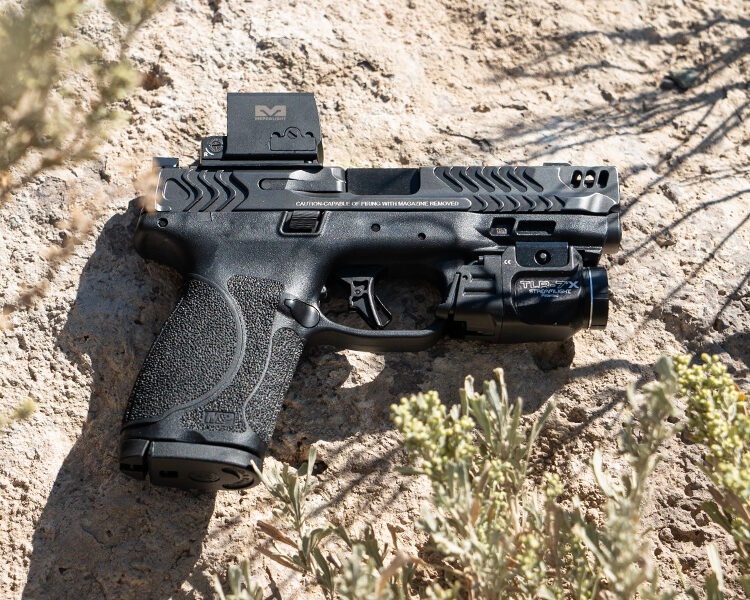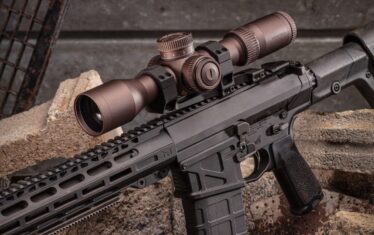Another week, another new product announcement for a pistol with an integrated compensator.
Manufacturers are rolling these things out like pancakes at IHOP (seriously, I got another press release while I was typing this), but what are they? Should you care enough to spend your hard-earned money to buy one?
Allow me to break down the concept of a compensator in terms even I can understand, walk you through some of the models available, and share my experience with the new Smith & Wesson Performance Center M&P9 M2.0 Compact Carry Comp.
Ammunition for this review was provided courtesy of Ammo To Go. If you want to shoot the same ammo I used in this story, pick up a case of Federal American Eagle 115-grain FMJ 9mm.
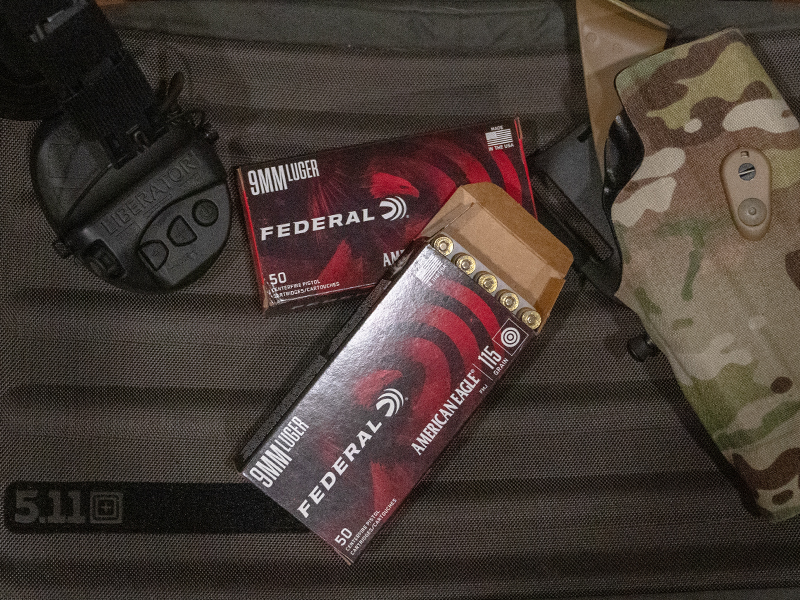
What Is A Pistol Compensator?
The short version goes like this: compensated pistols have a special blowhole in the top, like a whale, so they recoil less.
Let’s figure out how that works using SAAMI’s 9mm data as an example.
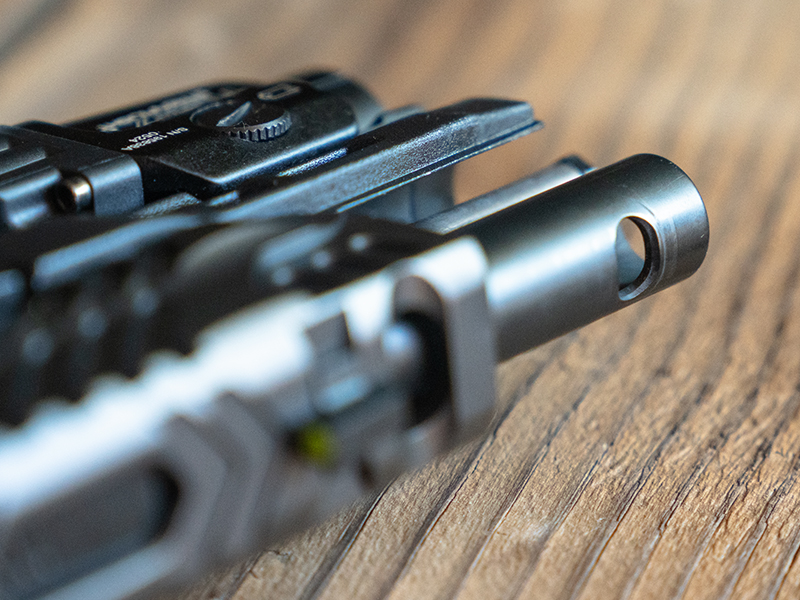
When you pop the primer on a 9mm round, the burning powder in the case expands, pushing the bullet down the bore with 35,000 pounds per square inch of pressure.
When the tail end of the bullet breaks free of the muzzle, all of that pressure escapes along with it. That’s a lot of force, and it makes your barrel act like a miniature rocket. That rocket isn’t going to achieve liftoff as long as you have a firm grip, but you’ll feel some recoil and see the muzzle rise.
A pistol compensator is just a hole at the 12 o’clock position at the end of the barrel. If the barrel doesn’t protrude from the slide, there has to be a corresponding hole in the slide, as well.
When this hole is present, a portion of the expanding gas gets diverted upward rather than forward. Think of it like the stabilizing rockets on a spacecraft; a little nudge can keep everything pointed in the right direction.
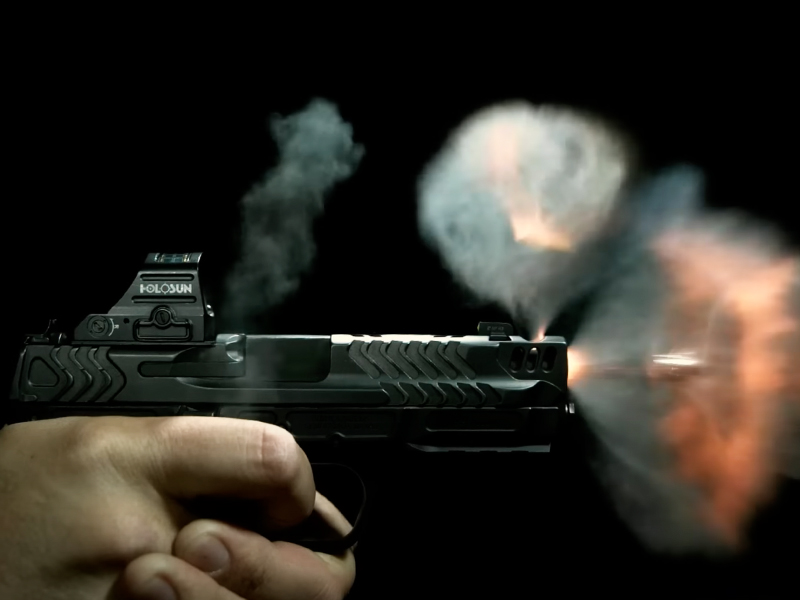
It’s that simple. A compensator uses recoil against itself with a bit of clever physics jiu-jitsu. The bottom line is that you experience less recoil and your sights stay closer to your original point of aim following the shot.
The good news is that if a compensator is integrated into a pistol’s existing design, you can find a holster for it using the original model’s existing aftermarket support.
Comp Pistols: Take Your Pick
Pistol compensators came from the world of competitive shooting. People who needed to shave hundredths off their split time took an interest in flat-shooting pistols long before the rest of us, and they already had impeccable technique.
Now, we average Joes and Joannas get to reap the fruits of their labor.
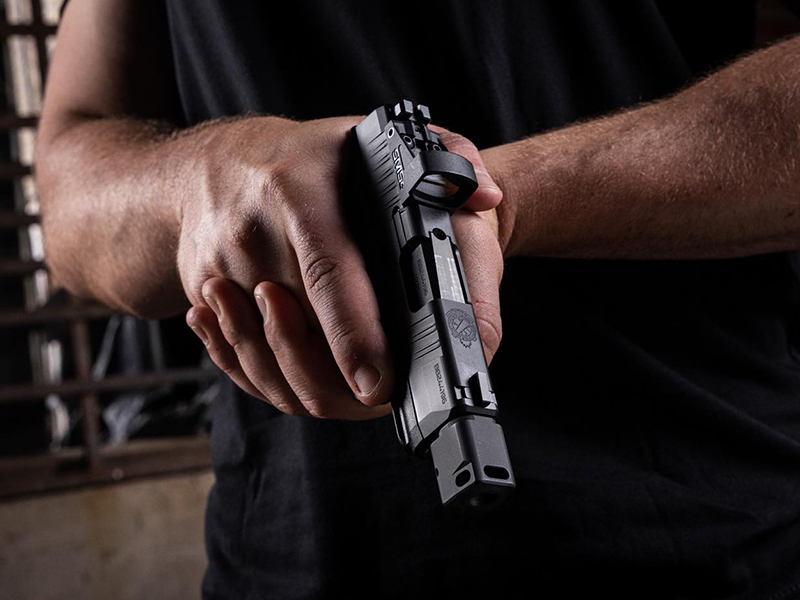
I recently got my hands on a Smith & Wesson Performance Center M&P9 M2.0 Compact Carry Comp. It’s a souped-up version of the standard M&P that comes with an up-spec trigger and a compensator cut into the barrel and slide.
Walther dropped the compensated PDP Pro-X just a few weeks after Smith & Wesson launched the Carry Comp.
Springfield Armory is all-in on the compensator trend. It started with the Hellcat’s optional Rapid Defense Package. Then the gunmaker started selling threaded barrels and self-indexing compensators for other Hellcat and Hellcat Pro owners.
Now, there’s a Hellcat Pro Comp, Echelon Comp, and Prodigy Comp — as if the double-stack 1911’s bull barrel didn’t make its recoil soft enough already.
Speaking of unnecessary but awesome, Sig Sauer sells a race-bred P322-COMP for all of you who wince at the thought of managing the mighty recoil of .22 LR.
Shooting With A Pistol Compensator
So, do compensators work or are they just a gimmick?
After shooting the Smith & Wesson Carry Comp, I can say they work. The reduction in recoil is noticeable and there aren’t really any downsides that I’ve found.
Be realistic about what that means, though. Yes, the Carry Comp took some of the snap out of the compact pistol but it doesn’t eliminate it or absolve you from using proper technique.
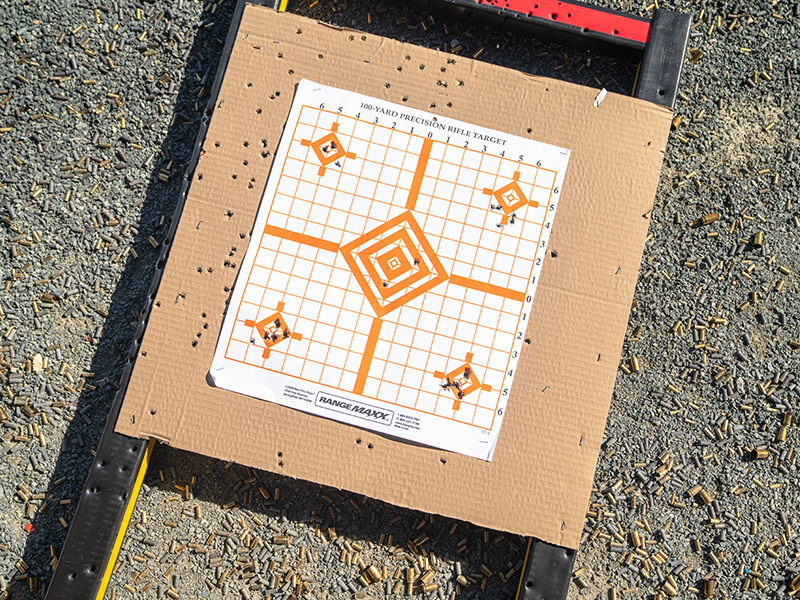
You know how people who don’t shoot think “silencers” make guns silent? It’s like that. You can still hear a suppressed gunshot and you can still feel the muzzle rise on a comped pistol, it’s just that both are significantly less bothersome than the alternative.
All in all, I was impressed with how the Carry Comp shot. It’s more accurate, flat-shooting, and refined than the majority of CCW-type pistols. I guess less recoil and a Performance Center trigger will do that.
The Verdict On Compensated Pistols
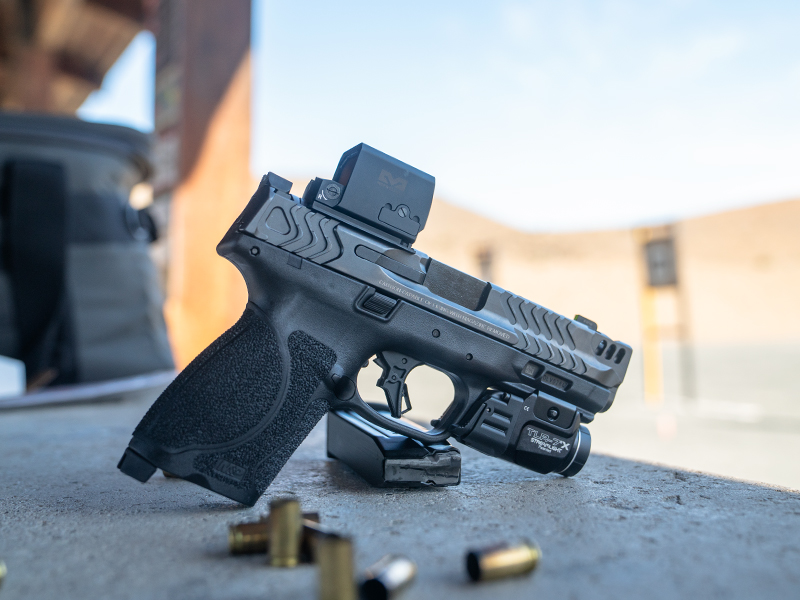
Yes, compensators work. They’re effective tools for reducing muzzle rise and speeding up accurate follow-up shots. Competitive shooters know what they’re doing and we could all learn a thing or two from them.
But that doesn’t mean you and I can slack on our technique, limp-wrist a fancy new pistol, and expect to shoot like Jerry Miculek. The fundamentals still apply; the compensator is just another tool to help us maximize our potential.
If you already own a pistol you like, keep training with it. Spending $800 on pistol classes will get you a lot further than spending the same amount on a new pistol and expecting it to solve all your problems.
On the other hand, if you’re in the market for something new, compensated pistols make a lot of sense. If you can afford to give yourself a competitive edge, why not do it?





